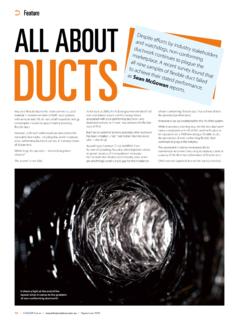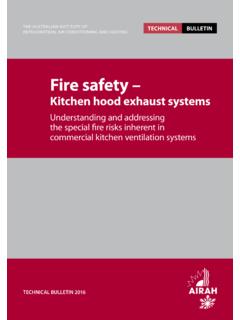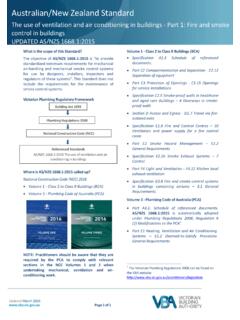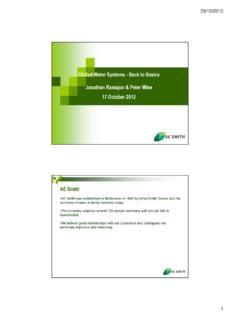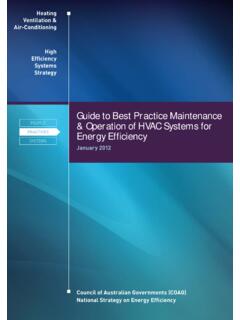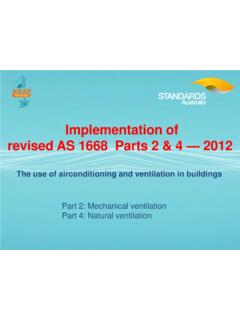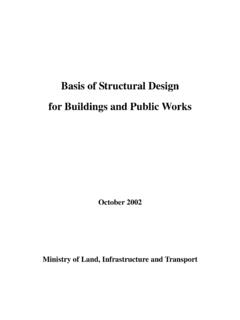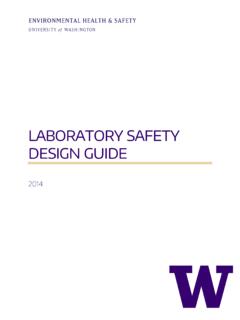Transcription of Seismic Restraint of Engineering Services Introduction
1 Seismic Restraint of Engineering Services g172 pd Updated in April 2015 Seismic Restraint of Engineering Services Introduction Despite Australia s seemingly low Seismic risk, being in the middle of one of the earth s larger tectonic plates, we have been subjected to 17 earthquakes registering 6 or more on the Richter Scale in the last 80 years. There have been six major earthquakes recorded in South Australia; 1897 Beachport 1902 Warooka 1954 Adelaide (Darlington) 1986 Marryat Creek 2012 & 2013 Ernabella Seismologists advise that based on local geology earthquakes of up to Richter magnitude can occur in South Australia however earthquakes of such a magnitude are very rare. Experience from around the world shows that failure of Engineering Services as a result of an earthquake can have a significant effect on life safety and economic loss.
2 The Seismic loads that Engineering Services must be designed to resist are calculated using Section 8 of AS - 2007 Structural design actions Part 4: earthquake actions in Australia. The standard requires that Engineering Services be designed to resist earthquake forces except where the Services are located in domestic structures less than tall and Importance Level One structures. The Standard is applicable to equipment mounted on structures as well as on the ground, such as high voltage circuit breakers, transformers and tanks. The aim of this Guidenote is to make designers aware of the: Requirement to restrain Engineering Services against Seismic forces in accordance with Section 8 of AS - 2007; Requirement that the Seismic bracing of Engineering Services be documented in detail in the tender drawings and specification on DPTI projects and that the Lead Professional Service Contractor is required to co-ordinate this work across all disciplines; Technical information available to assist in designing and detailing the Seismic Restraint of Engineering Services .
3 The following items are excluded from the scope of this Guidenote: The Restraint of Engineering Services in an importance level 4 building as a special study is required to be carried out to ensure they remain serviceable for immediate use following the design event for importance level 2 structures (1 in 500 year earthquake ). Suspended ceilings. building contents including portable appliances. Definitions Anchor A fastener installed into concrete used to transfer Seismic forces. Brace An element of the Restraint system used to transfer Seismic force from a component to the supporting structure. Domestic structure Single dwelling or one or more detached dwellings complying with Class 1a or 1b as defined in the National Construction Code. Ductile material flexible and tough material, eg: steel, copper, aluminium. Seismic Restraint of Engineering Services Page 2 of 14 Importance Level The classification of the building on the basis of its consequences of failure.
4 Non-ductile or brittle material easily broken or fragile materials, materials unable to deform plastically after yielding. eg: cast iron, plastic. Non-structural elements those parts of a building that do not lie in the primary load-bearing path of the building and are not part of the Seismic resisting system. Supporting structure The primary earthquake resisting structure of the building . Design Responsibility When designing a building the role of Engineering Services in protecting life and property and providing safe egress from the building , as well as the Seismic resistance of Engineering Services , needs to be considered. One of the common problems in achieving compliance with - 2007 in regard to Engineering Services is identifying who is responsible for ensuring compliance. There is no clear answer for the responsibility of many non-structural Seismic design issues.
5 In order to help designers determine who might best be allocated responsibility for Engineering Services the following table is provided as a guide only. Lead Professional Service Contractors may wish to use this guide in establishing contractual relationships within their team. Regardless the Lead Contractor has overall responsibility and must ensure that the requirements of Section 8 of - 2007 and this Guidenote are met. Table 1: Design responsibilities for Restraint of Engineering Services to comply with (Extract from FEMA 454 table 9-3) Note: 1 = Primary Responsibility 2 = Support Responsibility Engineering Service Architect Structural Engineer Electrical Engineer Mechanical Engineer Other Design Professional HVAC systems 2 2 1 Plumbing systems 2 1 Plumbing equipment 2 2 1 Communication and data systems 2 1 May consider a specialty consultant Electrical equipment 2 2 1 Vertical transportation systems 2 1 2 2 Emergency power supply 2 2 1 2 Fire protection systems 2 2 1 May consider a specialty consultant Kitchen systems 1 2 May consider a specialty consultant Lighting systems 2 1 Medical systems 1 2 2 2 May consider a specialty consultant Tanks and vessels 2 2 1 Other.
6 Suspended ceilings 1 2 Seismic Restraint of Engineering Services Page 3 of 14 Methodology The suggested steps to design and document the requirements for Seismic bracing of Engineering Services to - 2007 are as follows. building importance level and earthquake annual probability of exceedance Establish the importance level of the building using the definitions given in Table of the National Construction Code (NCC). A discussion should take place with the project team and the importance level be confirmed with the Lead Agency as being appropriate for their intended use of the building . Table 2: Combination of tables and from the National Construction Code. Importance Level building Type Examples of building types earthquake Annual probability of exceedance 1 Buildings or structures presenting a low degree of hazard to life and other property in the case of failure.
7 Farm buildings. Isolated minor storage facilities. Minor temporary facilities. 1:250 years 2 Buildings or structures not included in Importance Levels 1, 3 and 4. Low rise residential construction. Buildings and facilities below the limits set for Importance Level 3. 1:500 years 3 Buildings or structures that are designed to contain a large number of people. Buildings and facilities where more than 300 people can congregate in one area. A primary school, secondary school or day care facility with a capacity greater than 250. Colleges or adult education facilities with a capacity greater than 500. Health care facilities with a capacity of 50 or more residents but not having surgery or emergency treatment facilities. Jails and detention facilities. Any occupancy with an occupant load greater than 5000. Power generating facilities, water treatment and wastewater treatment facilities, any other public facilities not included in Importance level 4.
8 1: 1000 years 4 Buildings or structures that are essential to post disaster recovery or associated with hazardous facilities. Buildings and facilities designated as essential facilities or having special post disaster functions. Medical emergency or surgery facilities. Emergency service facilities: fire, rescue, police station and emergency vehicle garages. Utilities required as backup for buildings and facilities of Importance Level 4. Designated emergency shelters, centres and ancillary facilities. Buildings and facilities containing hazardous materials capable of causing hazardous conditions that extend beyond property boundaries. 1:1500 years Seismic Restraint of Engineering Services Page 4 of 14 Forces on Engineering Services Having determined the Importance Level of the building now determine whether Seismic bracing of Engineering Services is required and the method to be used to calculate those forces.
9 Table 3: Summary of earthquake Force Calculations based upon building Description and - 2007 building Description Does Section 8 Apply? earthquake Force calculation Domestic dwellings with h < No Fc = 0 Domestic dwellings with h > (Class 1a or 1b) Yes Treat as for Importance Level 2 buildings Importance Level 1 buildings No Fc = 0 Importance Level 2 and 3 buildings with height < 15m Yes Fc = x Wc for non-brittle parts and components as per section of - 2007. Importance Level 2 and 3 buildings with height > 15m Yes Refer Section or of 2007 for more detailed calculations. Where Section 8 does not apply no further consideration is required. Should Section 8 apply then proceed to review the Engineering Services design. Review the Engineering Services design Review the mechanical and electrical Services design to determine which Services do and do not require Seismic Restraint .
10 In accordance with - 2007 the following Services always need to be provided with Seismic restraints in Importance Level 2 and 3 buildings: Smoke control systems. Emergency electrical systems (including battery racks). Fire and smoke detection systems. Fire suppression systems (including sprinklers). Life safety system components. Boilers, furnaces, incinerators, water heaters, and other equipment using combustible energy sources or high energy sources, chimneys, flues, smokestacks, vents and pressure vessels. Communication systems (such as cable systems, motor control devices, switchgear, transformers and unit substations. Reciprocating or rotating equipment Utility and Services interfaces Anchorage of lift machinery and controllers Lift and hoist components including structural frames providing support for guide rail brackets, guide rails and brackets, car abd counterweight members Escalators Seismic Restraint of Engineering Services Page 5 of 14 Machinery (manufacturing and process) Lighting fixtures Electrical panel boards and dimmers Conveyor systems (non personal) Ducts and piping distribution systems also need to be provided with restraints /bracing to resist Seismic loads except where they are below the thresholds set in The thresholds below which duct and piping distribution do not need to be seismically restrained are: Gas piping less than 25mm inside diameter.)
